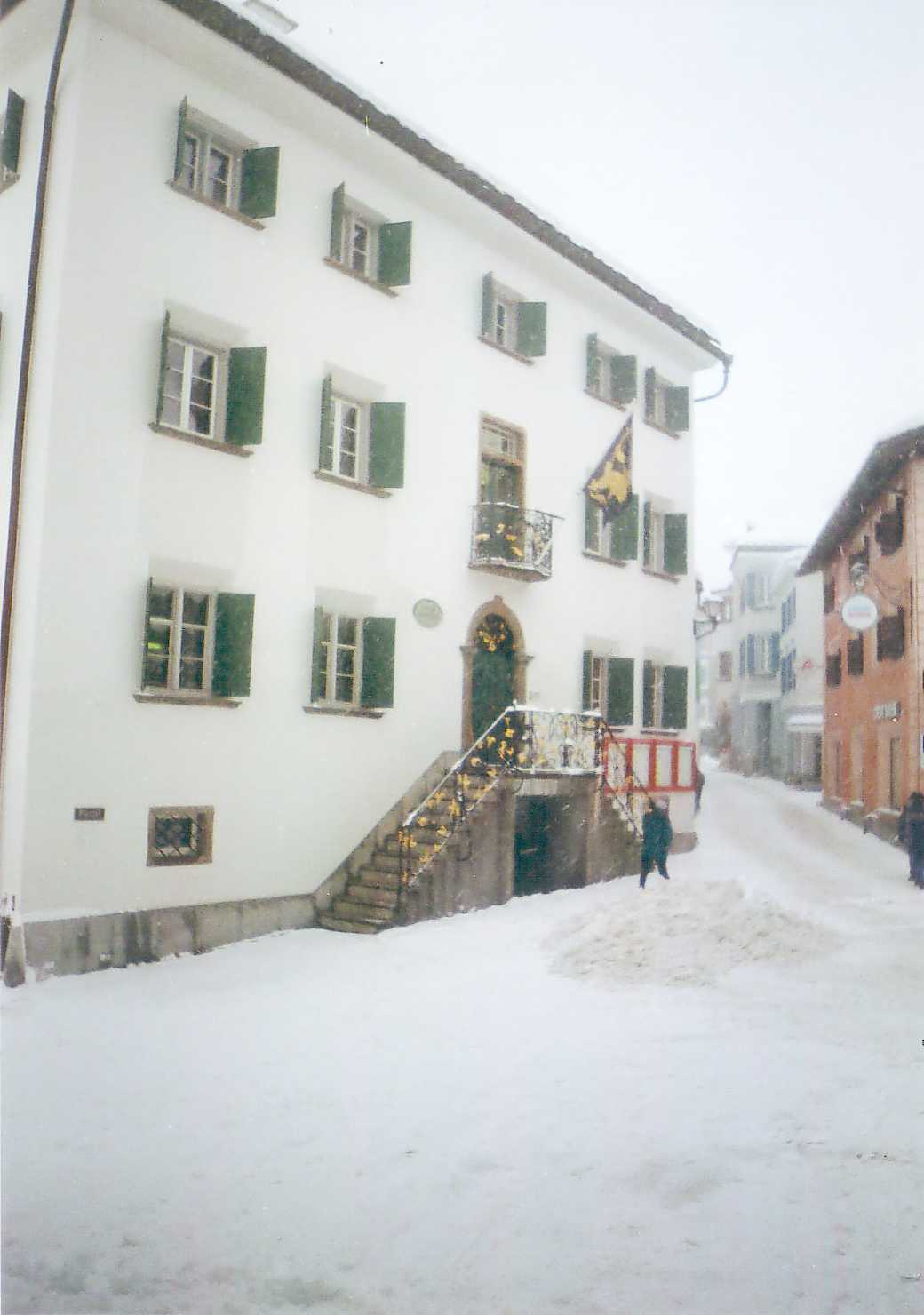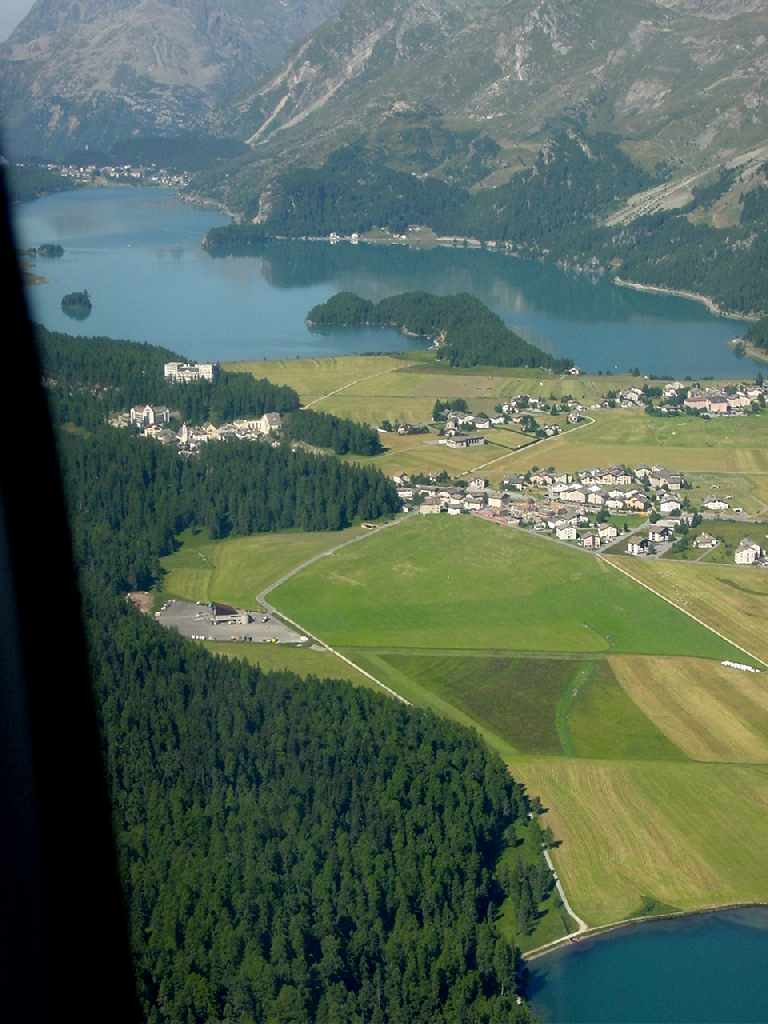|
Upper Engadine Cultural Archives
The Upper Engadine Cultural Archives is collecting of historical records and documents from Upper Engadine (Switzerland) and the neighbouring region. The Archives are housed in the ''Chesa Planta'', a 16th century house in Samedan. The building and its library are a Swiss heritage sites of national significance. Activities The goal of the Archives is to collect and conduct research on the cultural heritage of the Upper Engadine and the surrounding regions. The organization makes its materials accessible to the public and addresses the arts, architecture, language, music, nature study, development of hotels, tourism, traffic and sport in the Engadine. Since it was established in 1988, the Archives received or purchased more than 500 inheritances and gifts, consisting of posthumous productions, documentations and documents on art, architecture, language, music, natural history etc. Some of the most important available records are the family inheritance of the physicians Berry fr ... [...More Info...] [...Related Items...] OR: [Wikipedia] [Google] [Baidu] |
Samedan
Samedan (, ) is a town and municipality in the Maloja Region in the Swiss canton of Grisons. It is served by Samedan railway station on the Rhaetian Railway network and by the Samedan Airport. History Samedan is first mentioned in 1139 as ''Samaden''. In 1334 it was mentioned as ''Semeden'', in 1367 as ''Semaden'', in 1498 as ''Sumada'' and in 1527 as ''Sameden''. Johann Heinrich Müller, 1825-1894 J08 Samaden.JPG, Samedan c. 1870 with the Bernina hotel (opened in 1865), one of the oldest hotels in the Engadin. Etching by Heinrich Müller Samedan circa 1870.jpg, A photograph of Samedan in the circa 1870s Samedan circa 1870 B.jpg, Another photographic view of Samedan in the circa 1870s ETH-BIB-Samedan-LBS H1-017880.tif, Aerial view (1954) Geography Samedan has an area, (as of the 2004/09 survey) of . Of this area, about 15.5% is used for agricultural purposes, while 9.7% is forested. Of the rest of the land, 1.9% is settled (buildings or roads) and 72.9% is unproductive la ... [...More Info...] [...Related Items...] OR: [Wikipedia] [Google] [Baidu] |
Engadin
The Engadin or Engadine ( rm, ;This is the name in the two Romansh idioms that are spoken in the Engadin, Vallader and Puter, as well as in Sursilvan and Rumantsch Grischun. In Surmiran, the name is ''Nagiadegna'', and in Sutsilvan, it is ''Gidegna''. german: ; it, Engadina; french: Engadine) is a long high Alpine valley region in the eastern Swiss Alps in the canton of Graubünden in southeasternmost Switzerland with about 25,000 inhabitants. It follows the route of the Inn ( rm, En, links=no) from its headwaters at Maloja Pass in the southwest running roughly northeast until the Inn flows into Austria, little less than one hundred kilometers downstream. The En/Inn subsequently flows at Passau into the Danube, making it the only Swiss river to drain into the Black Sea. The Engadine is protected by high mountain ranges on all sides and is famous for its sunny climate, beautiful landscapes and outdoor activities. Name In English, the valley is either known as ''Engadin'' ... [...More Info...] [...Related Items...] OR: [Wikipedia] [Google] [Baidu] |
Switzerland
). Swiss law does not designate a ''capital'' as such, but the federal parliament and government are installed in Bern, while other federal institutions, such as the federal courts, are in other cities (Bellinzona, Lausanne, Luzern, Neuchâtel, St. Gallen a.o.). , coordinates = , largest_city = Zürich , official_languages = , englishmotto = "One for all, all for one" , religion_year = 2020 , religion_ref = , religion = , demonym = , german: Schweizer/Schweizerin, french: Suisse/Suissesse, it, svizzero/svizzera or , rm, Svizzer/Svizra , government_type = Federalism, Federal assembly-independent Directorial system, directorial republic with elements of a direct democracy , leader_title1 = Federal Council (Switzerland), Federal Council , leader_name1 = , leader_title2 = , leader_name2 = Walter Thurnherr , legislature = Fe ... [...More Info...] [...Related Items...] OR: [Wikipedia] [Google] [Baidu] |
Sils Im Engadin/Segl
Sils im Engadin/Segl (german: Sils im Engadin; Romansh ), often also as ''Sils i.E./Segl'', is a municipality and village in the Maloja Region, Upper Engadine in the Swiss canton of the Grisons. It consists of two villages, Segl Maria (Romansh, german: Sils Maria; ''Seglias'' is part of Segl Maria) and Segl Baselgia (German: ''Sils Baselgia''; ''Baselgia'' is Romansh for church); the Val Fex (German: ''Fextal''); and three ''Maiensäss''e (Alpine pastures traditionally used for spring grazing): Grevasalvas, Blaunca and Buaira, above ''Plaun da Lej'' on the left side of the valley. Name and coat of arms The municipality's official label uses both the German and the Romansh versions of its name: ''Segl'' is the Romansh version while ''Sils im Engadin'' is the German. Engadin is Romansh for "Valley of the Inn ( rm, En)", the river, which flows northeast from Maloja through Sils Baselgia and eventually into the Danube at Passau, Germany at the German-Austrian border. Sils i. ... [...More Info...] [...Related Items...] OR: [Wikipedia] [Google] [Baidu] |
Berlin
Berlin ( , ) is the capital and largest city of Germany by both area and population. Its 3.7 million inhabitants make it the European Union's most populous city, according to population within city limits. One of Germany's sixteen constituent states, Berlin is surrounded by the State of Brandenburg and contiguous with Potsdam, Brandenburg's capital. Berlin's urban area, which has a population of around 4.5 million, is the second most populous urban area in Germany after the Ruhr. The Berlin-Brandenburg capital region has around 6.2 million inhabitants and is Germany's third-largest metropolitan region after the Rhine-Ruhr and Rhine-Main regions. Berlin straddles the banks of the Spree, which flows into the Havel (a tributary of the Elbe) in the western borough of Spandau. Among the city's main topographical features are the many lakes in the western and southeastern boroughs formed by the Spree, Havel and Dahme, the largest of which is Lake Müggelsee. Due to its l ... [...More Info...] [...Related Items...] OR: [Wikipedia] [Google] [Baidu] |
Elizabeth Hawkins-Whitshed
Elizabeth Hawkins-Whitshed (26 June 1860 – 27 July 1934), usually known after her third marriage as Mrs Aubrey Le Blond and to her climbing friends as Lizzie Le Blond, was an Irish pioneer of mountaineering at a time when it was almost unheard of for a woman to climb mountains. She was also an author and a photographer of mountain scenery. She came from an upper-class background, being the daughter of Captain Sir St Vincent Hawkins-Whitshed, 3rd Baronet (1837–1871) (see Hawkins-Whitshed baronets) by his wife Anne Alicia (''née'' Handcock) (1837–1908), and further back was descended from the aristocratic Bentinck family, and was therefore related to the Dukes of Portland. She grew up in Greystones, County Wicklow, in the south-east of Ireland, where her father owned quite a bit of land. However, her father then died, leaving no other children, while she was still a minor, and the Lord Chancellor took her on as his ward. Elizabeth moved to Switzerland, where she climbed m ... [...More Info...] [...Related Items...] OR: [Wikipedia] [Google] [Baidu] |
Celerina/Schlarigna
Celerina/Schlarigna (German/Italian ''Celerina''; Romansh ) is a municipality in the Maloja Region in the Swiss canton of Graubünden. History Celerina/Schlarigna was first mentioned in 1313 as ''Schellarin'' and in 1320 as ''Celarina''. In 1631, a fire destroyed 43 houses. From the 1860s onwards, tourism became more and more important to the village. The Cresta Run opened in 1884, the St. Moritz-Celerina Olympic Bobrun in 1904 and the cable car to Saluver in 1958. In the course of the 20th century, the population structure of the originally Romansh-speaking farming village underwent radical change, with people moving to the thriving resort from the German-speaking part of Switzerland and also from Italy. Geography Celerina/Schlarigna has an area, , of . Of this area, 34% is used for agricultural purposes, while 30.5% is forested. Of the rest of the land, 4.1% is settled (buildings or roads) and the remainder (31.4%) is non-productive (rivers, glaciers or mountains). I ... [...More Info...] [...Related Items...] OR: [Wikipedia] [Google] [Baidu] |
Borgonovo, Switzerland
Borgonovo is a small village, part of a former municipality Stampa. It is now part of the municipality of Bregaglia in the Maloja district of the Swiss canton Graubünden, Switzerland. Notable people * Alberto Giacometti, 1901 – 1966, artist, born and buried in the San Giorgio church of Borgonovo * Giovanni Giacometti, 1868 – 1933, a Swiss painter, born in Borgonovo, the father of artists Alberto and Diego Giacometti and architect Bruno Giacometti Bruno Giacometti (24 August 1907 — 21 March 2012) was a Swiss architect and the brother of the artists Alberto Giacometti, Alberto and Diego Giacometti. He was among the most notable post-World War II architects in Switzerland. Biography Giac ... Bregaglia Villages in Graubünden {{graubünden-geo-stub ... [...More Info...] [...Related Items...] OR: [Wikipedia] [Google] [Baidu] |
Archives In Switzerland
An archive is an accumulation of historical records or materials – in any medium – or the physical facility in which they are located. Archives contain primary source documents that have accumulated over the course of an individual or organization's lifetime, and are kept to show the function of that person or organization. Professional archivists and historians generally understand archives to be records that have been naturally and necessarily generated as a product of regular legal, commercial, administrative, or social activities. They have been metaphorically defined as "the secretions of an organism", and are distinguished from documents that have been consciously written or created to communicate a particular message to posterity. In general, archives consist of records that have been selected for permanent or long-term preservation on grounds of their enduring cultural, historical, or evidentiary value. Archival records are normally unpublished and almost alway ... [...More Info...] [...Related Items...] OR: [Wikipedia] [Google] [Baidu] |
History Of Graubünden
The Grisons () or Graubünden,Names include: *german: (Kanton) Graubünden ; * Romansh: ** rm, label=Sursilvan, (Cantun) Grischun ** rm, label= Vallader, (Chantun) Grischun ** rm, label= Puter, (Chantun) Grischun ** rm, label=Surmiran, (Cantun) Grischun ** rm, label=Sutsilvan, (Cantùn) Grischùn ** rm, label= Rumantsch Grischun, (Chantun) Grischun; * it, (Cantone dei) Grigioni ; *french: (Canton des) Grisons . See also other names. more formally the Canton of the Grisons or the Canton of Graubünden, is one of the twenty-six cantons of Switzerland. It has eleven regions, and its capital is Chur. The German name of the canton, , translates as the "Grey Leagues", referring to the canton's origin in three local alliances, the Three Leagues. The other native names also refer to the Grey League: in Sutsilvan, in the other forms of Romansh, and in Italian. ''"Rhaetia"'' is the Latin name for the area. The Alpine ibex is the canton's heraldic symbol. The largest and easter ... [...More Info...] [...Related Items...] OR: [Wikipedia] [Google] [Baidu] |
Cultural Property Of National Significance In Graubünden
Culture () is an umbrella term which encompasses the social behavior, institutions, and norms found in human societies, as well as the knowledge, beliefs, arts, laws, customs, capabilities, and habits of the individuals in these groups.Tylor, Edward. (1871). Primitive Culture. Vol 1. New York: J.P. Putnam's Son Culture is often originated from or attributed to a specific region or location. Humans acquire culture through the learning processes of enculturation and socialization, which is shown by the diversity of cultures across societies. A cultural norm codifies acceptable conduct in society; it serves as a guideline for behavior, dress, language, and demeanor in a situation, which serves as a template for expectations in a social group. Accepting only a monoculture in a social group can bear risks, just as a single species can wither in the face of environmental change, for lack of functional responses to the change. Thus in military culture, valor is counted a typica ... [...More Info...] [...Related Items...] OR: [Wikipedia] [Google] [Baidu] |








